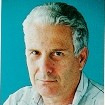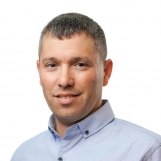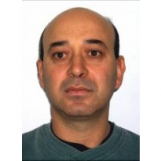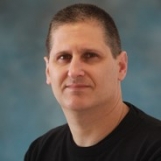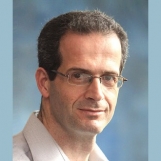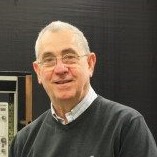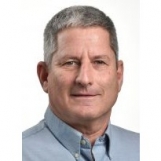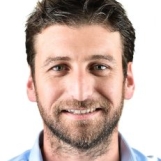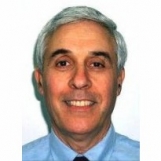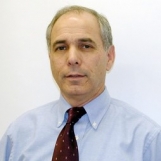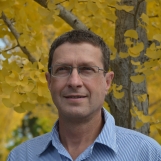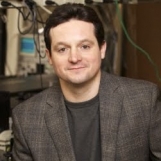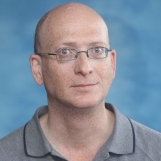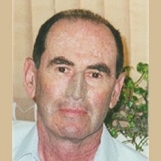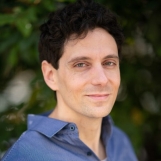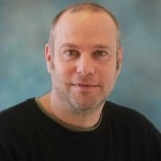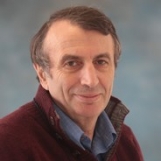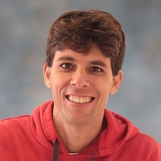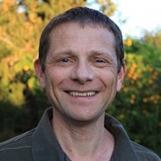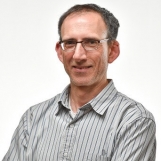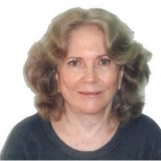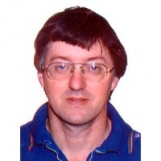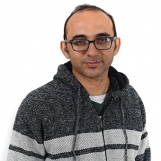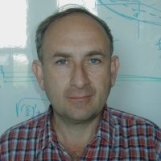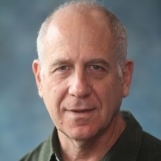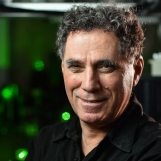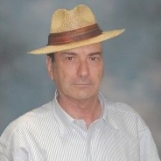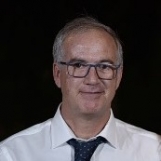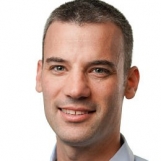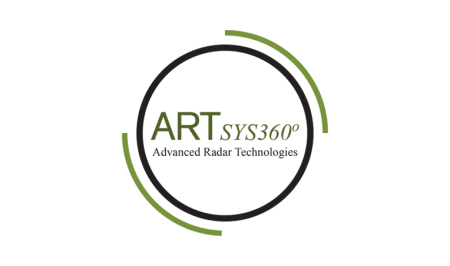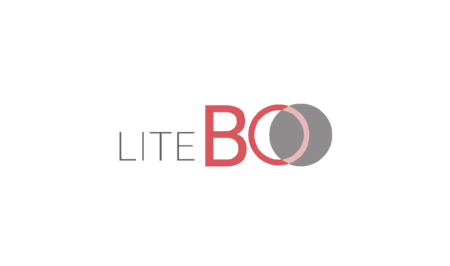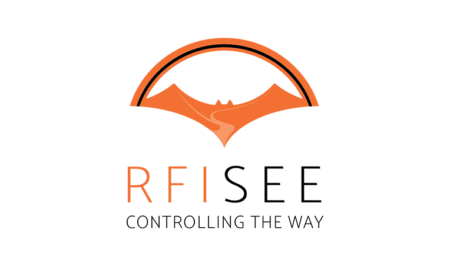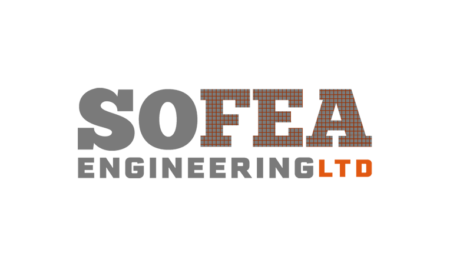2D semiconductors for quantum information processing
Quantum computers use materials which show quantum properties at very low temperatures. Maintaining these cryogenic temperatures requires a lot of energy, is costly and sizable. The discovery of graphene stimulated a surge for ultra-thin magnets, which included magnetically doped graphene,...
Categories:
Chemistry and Materials|Physics and Electro-Optics
3D printing-based diffractive optical element fabrication
Diffractive Optical Elements (DOEs) are used to shape the wavefront of incident light in complex patterns, and are ubiquitous across optical applications, ranging from laser processing through lithography to communication and imaging. Example applications include beam splitters, beam shapers, optical...
Categories:
Chemistry and Materials|Physics and Electro-Optics
A novel memory structure in the CPU
SRAM is the commonly used memory technology in CPU. The low density and high static power limit the amount of data that can be stored in buffers, register files, and caches, just to name a few. This calls for new...
Categories:
Information and Computer Science|Physics and Electro-Optics
Acoustic fiber sensors based on ultra-low noise opto-electronic oscillator
Optical acoustic interferometric fiber sensors are based on measuring the phase change in an optical wave that propagates through a fiber due to a strain induced by the acoustic signal. This phase change is measured by using an optical interferometry...
Categories:
Physics and Electro-Optics|Security & Defense
Advanced thin-layer coating for superior UV resistance in polymers
Plastics are highly susceptible to UV radiation, leading to degradation, reduced lifespan, discoloration and frequent replacements. Traditional solutions, such as UV stabilizers, absorbers, antioxidants, and thick coatings, often come with limitations—altering mechanical properties, requiring chemical compatibility, or relying on heavily...
Categories:
Chemistry and Materials|Physics and Electro-Optics|Sustainability and Energy
All-angle electromagnetically transparent surfaces
Reflection off antenna radomes may distort the radiation pattern and reduce gain or bandwidth. Optical refraction may deform wavefronts of light and produce aberrant images. Remarkably, both wave reflection and refraction are inherently spatially dispersive, namely, they depend on the...
Categories:
Chemistry and Materials|Physics and Electro-Optics
Analyzing light by three-photon counting
Photon counting is the key enabler in quantum optics for variety of quantum information applications. It also plays an important role in classical applications involving extremely low light intensities in a wide range of fields including biological imaging and optical...
Categories:
Physics and Electro-Optics
Audio SNR improvement utilizing video analysis
This work deals with complex scenarios such as a ‘cocktail party’: multiple sound sources exist simultaneously in all modalities. This inhibits the interpretation of each source. Cross-modal analysis offers information beyond that extracted from individual modalities. Consider a camcorder having a...
Categories:
Information and Computer Science|Physics and Electro-Optics
Optical elements for the shaping of light beams are important in many fields, such as, medical surgical tools, lithography, military and communication. Each application requires a specific beam shape regardless of the original beam. Usually, the known designs are based...
Categories:
Physics and Electro-Optics
Biomarker monitoring for early treatment
BiomarkerFlow is a diagnostic platform that enables rapid, multiplexed detection of biomarkers through advanced computational microscopy and microfluidics. It provides a breakthrough alternative to conventional immunoassays, such as ELISA and ECLIA, by offering faster, more scalable, and cost-effective analysis with...
Categories:
Medical Devices|Physics and Electro-Optics
Charge-discharge electro-optical microring modulator
Silicon Integrated electro-optical (EO) modulators are essential for insertion the information into the optical channel in high-speed optical communication technology. Further applications are optical sensors and guiding high frequency microwave signals by optical wave carriers. Device footprint, driven voltage, modulation...
Categories:
Physics and Electro-Optics
CMOS-SiPM array for ToF measurements
Ultra-sensitive light detection systems are increasingly being employed in applications such as mobile range finding, automotive ADAS (Advanced Driver Assistance Systems), gesture recognition, 3D mapping, security, etc. There is an increasing need for "Super-Camera" which is capable of producing two-dimensional and...
Categories:
Automation, Mobility and Aerospace|Information and Computer Science|Physics and Electro-Optics
Detecting far objects using a 3D optic system
Today, radar or stereoscopic systems are used when distance estimation is required. Radar systems require expensive equipment. Methods that are based on triangulation require 2 cameras. As the object distance increases, the distance between the cameras has to increase. In...
Categories:
Automation, Mobility and Aerospace|Physics and Electro-Optics
Detection and characterization of diffuse radiation sources
A standard method for evaluating the abundances of chemical species in stellar atmospheres is the COG. Assuming a species concentration fixed with depth, the theory of the COG evaluates the equivalent width of a spectral line as a function of...
Categories:
Physics and Electro-Optics
Detection of single and multi-center chiral molecules
Identifying chirality of molecules especially with multiple chiral centers is crucial to the pharmaceutical industry as chirality affect activity, efficacy and even pose safety issues. Currently the molecules chirality identification methods rely on weak signals and requires expensive equipment. Multiple...
Categories:
Pharmaceuticals and Biotechnology|Physics and Electro-Optics
Detection of x-ray and gamma-ray photons
Detection of high energy photons (x-rays and gamma rays) is of great importance for applications in medical radiography, security inspection, radiation exposure monitoring, and high energy physics. Scintillation, which is the ability of certain materials to absorb high-energy (KeV scale)...
Categories:
Medical Devices|Physics and Electro-Optics
Edge-state based actuation in ferroelectric field effect transistors
One of the holy grails for the microelectronic industry is to continue device miniaturization in order to increase the operation speed of the device (clock speed) and to pack more devices to reduce the fabrication cost. Therefore, many efforts are...
Categories:
Chemistry and Materials|Information and Computer Science|Physics and Electro-Optics
Fluidic Shaping of ocular lenses
Researcher:
Prof. Moran Bercovici
Various methods are being used for lenses fabrication, however these are effective usually for large-scale fabrication, where the cost and time spent on the initial mold is justified. Another method is depositing a finite volume of a liquid (e.g. polymer...
Categories:
Chemistry and Materials|Physics and Electro-Optics
Fundamental component of modern hardware security
Emerging nanoelectronic memristive technologies promise to provide an alternative to the ubiquitous CMOS technology. CMOS compatibility, along with a combination of properties such as non-linearity, non-volatility and sensitivity to process variations, make this technology appealing for embedded security applications. The...
Categories:
Information and Computer Science|Physics and Electro-Optics
Current gamma radiation detectors are large items. Detection of source direction is very inaccurate or requires long scanning process. Wise positioning of small and sensitive detectors allows quick detection of radiation source with high accuracy. Advantages Advantages Quick detection High...
Categories:
Physics and Electro-Optics|Security & Defense
Generating an ideal light source
In order to improve resolution in microscopy the light source should be both very bright and homogeneous. Inhomogeneity might cause artifacts that be conceived as actual details of the image. In order to avoid such artifacts there is a need...
Categories:
Physics and Electro-Optics
Highly sensitive (single photon) detector for IR wavelengths
Single photon detection at IR range is applicable mostly to short wavelength (NIR) and has low quantum efficiency. Using the principle of Quantum Cascade Detectors (QCD) in their known design “wastes” photons. However, electrically connecting the stages in parallel, while...
Categories:
Physics and Electro-Optics
Imaging of the electric grid
Power plants supply the city's electrical needs using alternating current (AC) power transmission. In AC power transmission, electrical energy is distributed by generating an AC voltage waveform (usually a sine wave) with a frequency of 50 or 60 Hz. This...
Categories:
Physics and Electro-Optics|Sustainability and Energy
Improving clarity of images taken under turbid medium conditions
The present invention relates to systems and methods for photographing an in a scattering medium such as water, fog or biological tissues. A wide range of imaging domains exists in scattering media. Several studies improved visibility in such media under...
Categories:
Automation, Mobility and Aerospace|Information and Computer Science|Physics and Electro-Optics|Security & Defense
Increased electron beam spatial and energy resolution
The performance of high-end electron microscopes (EMs) is significantly constrained by the energy spread of the electron beam, which impacts resolution by introducing chromatic aberrations. Our new technology allows mitigating the electron energy spread by energy squeezing by more than...
Categories:
Physics and Electro-Optics
MWIR technology can be used for fluorescent marking of objects such as money bills, military equipment, landing strips etc. However, it is based on bulk toxic materials and the devices based on them are noisy and require harsh and hazardous...
Categories:
Chemistry and Materials|Physics and Electro-Optics
Low dimensional perovskites nanostructures
Lead halide perovskite nanocrystals have shown high photoluminescence quantum yields, even without growing inorganic shells that protect their surfaces from deleterious surface traps. These observations present an important departure from traditional semiconductor nanocrystals that require passivating surface defects to achieve...
Categories:
Chemistry and Materials|Physics and Electro-Optics
Low temperature self-assembled nanostructures
Antireflective coatings are critical to many optical systems such as ophthalmic lenses. It is well known that creating textured nanostructures can be an alternative approach for the conventional deposition of thin layer in order to achieve broadband antireflective properties. The...
Categories:
Chemistry and Materials|Physics and Electro-Optics
Mass balancing for systems rotating and very high speed
Precise “mass balancing procedures” of fast rotating machines while being rotated at slow speeds of rotation. By adding a tunable, controlled external excitation that forces the rotating structure to ‘expose’ the projection of mass imperfection on the deflected structure at...
Categories:
Physics and Electro-Optics
Measurement of coating thermal properties
Thermal barrier coatings (TBCs) are engineered to provide sustained thermal protection to engine components that are exposed to excessive heat load. In the wake of this application, a reliable, non-intrusive and quantitative thermal property measurement method is in high demand...
Categories:
Automation, Mobility and Aerospace|Physics and Electro-Optics
Minimized Ultrasound Detectors
Ultrasound technology today is bulky and involves imaging probes with typical sizes of several centimeters. We have developed a new methodology for ultrasound imaging that can achieve extreme levels of miniaturization preserving high-resolution. This platform relies on optical technology for...
Categories:
Medical Devices|Physics and Electro-Optics
Mixed metal electrode for ambipolar charge injection
Ambipolar transistors can transport holes and electrons, separately or concurrently, within the semiconducting channel. The operation of the device requires that the semiconducting material composing the device is capable of efficiently transporting both charge carriers, and the suitable alignment of...
Categories:
Chemistry and Materials|Physics and Electro-Optics
Multispectral imaging device with no moving parts
Multispectral and spectral imaging is used to collect spatially and spectrally resolved radiance information of a predefined region of space. Devices for imaging are built per specific application, resolution and wavelength requirements. Each image pixel contains spectroscopic data. All the...
Categories:
Chemistry and Materials|Physics and Electro-Optics
Near-field imaging devices
Achieving better resolution in microscopy, metrology and lithography is an on going effort that could be realized by either using smaller wavelength illumination sources which is proved to be difficult for technical and economical reasons or using super-resolution - resolving...
Categories:
Chemistry and Materials|Physics and Electro-Optics
In clean manufacturing environments such as in the semi-conductor industry, transferring items such as wafers, glass, screens and other flat objects might cause to their contamination due to splashes from lubricants for example. A method and a device to carry...
Categories:
Physics and Electro-Optics
Optical reconfigurable logic device
In last few years, there is a need for an optical reconfigurable logic device which enables to lay foundations for all-optical networking, wherein the optical packets are routed by ultra-fast smart all-optical switches as well as optical computing devices. The...
Categories:
Information and Computer Science|Physics and Electro-Optics
Organic semiconductors p-dopants
Organic solar cells represent a promising advancement in solar technology, having recently achieved a significant improvement in photo-conversion efficiency from approximately 10% to 17%, with a projected maximum efficiency slightly surpassing 20%. Overcoming challenges in extracting carriers from the active...
Categories:
Chemistry and Materials|Physics and Electro-Optics|Sustainability and Energy
Piezoelectric devices with obliquely aligned electrodes
There exist many mechanical designs of piezoelectric unimorph actuators that can generate various motions other than conventional in-plane motions. Such devices are used to generate deflections or bending, twisting or torsional motion, and parallel out-of-plane motion, for use in micro-electromechanical...
Categories:
Automation, Mobility and Aerospace|Physics and Electro-Optics
Piezoelectric-ferroelectric actuator device
The capabilities of piezoelectric stacks actuators are still limited in terms of induced strains and travel range due to the materials operational range. They also have reduced resistance to large mechanical loads in the direction of movement. Many piezoelectric materials...
Categories:
Physics and Electro-Optics
Surface Plasmons Polaritons (SPPs) are surface waves that arise at metal-dielectric interfaces when an electromagnetic field oscillates in unison with the free electrons at the surface of the metallic interface constituent. Controlling light on scales much smaller than the light...
Categories:
Physics and Electro-Optics
Programming for electronic memories
Some Multi-Level-Cell memories suffer from nonlinearity in their switching mechanism (e.g., ReRAM). Using fixed programming pulses leads to a non-uniform level distribution and state-dependent programming which burdens the controller and demands a modified programming techniques. In order to deal with...
Categories:
Information and Computer Science|Physics and Electro-Optics
Quantum interferometry for accurate measurements
Force detection plays a crucial role in various applications, including surface characterization, gravitational and geological mapping, and acceleration and rotation sensing. Among the methods available, atomic interferometry stands out as one of the most sensitive techniques for detecting force. Atomic...
Categories:
Physics and Electro-Optics
Rapid clinical antimicrobial susceptibility diagnostic system
Technology By the year 2050, antimicrobial resistance is predicted to cost the world over 100 trillion US$ cumulatively and claim 10 million lives per year. Thus, there is an urgent need to develop diagnostic methods that will help physicians to...
Categories:
Chemistry and Materials|Food and Agriculture|Medical Devices|Physics and Electro-Optics
RFIC for MIMO OFDM (5-7GHz)
RFIC implementation of a transceiver front end for various applications up to 28Ghz deploying CMOS technology Advantages Enhanced TX/RX isolation utilizing CMOS technology Low cost CMOS implementation Applications and Opportunities Wifi and cellular transceiver ICS
Categories:
Information and Computer Science|Physics and Electro-Optics
Room temperature quantum detectors for microwave photons
Quantum radar and quantum communication are new fields in which information is transmitted between two or more points by using single photons, referring to their quantum state (e.g., polarization, or phase) of each photon separately. In this way information can...
Categories:
Information and Computer Science|Physics and Electro-Optics|Security & Defense
Sensitive sensors for new nanoparticle resonance biomedical applications
Optical interrogation of targets enables a non-destructive way by which to extract useful information on critical target parameters. Such methods predominantly employ either angular or spectral interrogation, in which the target is illuminated at different incidence angles or wavelengths, respectively....
Categories:
Chemistry and Materials|Physics and Electro-Optics
Sensors for shooting arms detection
Detection of hostile fire in real time in the field is a well-known problem. Modern low intensity conflicts and acts of terrorism are stressing the need for military and law enforcement agencies to locate sporadic sources of hostile fire. The...
Categories:
Physics and Electro-Optics|Security & Defense
Shaping electronic wavefunctions
Electron microscopy has become a pivotal tool in numerous fields of study, such as materials science and biology. Scanning Electron Microscopy (SEM) and Transmission Electron Microscopy (TEM) produce images of a sample by scanning it with a focused electron beam...
Categories:
Physics and Electro-Optics
Simple process for forming conductive oxide interfaces
Some insulating oxides can form conducting interfaces. These interfaces consist of a high-density of electrons roughly confined to a 2-dimensional layer (often referred to as 2DEGs) between two insulators, and it can possess unusual electrical properties. These conducting interfaces are...
Categories:
Physics and Electro-Optics
Single-photon quantum dot sources embedded in polymeric waveguides
Known single photon sources are hard to make and demands high vacuum and high temperatures. As such their production costs are extremally high. Moreover they need to be placed or fabricated on top of a photonic waveguiding structure. A novel...
Categories:
Chemistry and Materials|Physics and Electro-Optics
Current technologies to detect the development of underground cavities such as sinkholes or cross border smuggling tunnels require complicated and expensive data acquisition techniques. Fiber optics buried at shallow depth enable continuous, distributed monitoring of soil deformations along tens of...
Categories:
Physics and Electro-Optics|Security & Defense
Spectrally encoded imaging of tympanic membrane vibrations
According to the World Health Organization, over 5% (466 million) of the global population suffer from some sort of disabling hearing loss [1]. The annual cost of unaddressed hearing problems is estimated to be above $750 billion, mainly due to...
Categories:
Medical Devices|Physics and Electro-Optics
Sub-10 nm monolithic ferroelectric-semiconductor junction
Selective illumination using a scanning laser probe, is used to convert In2Se3 to In2O3, and achieved spatially resolved distinct optical and electrical properties. The method is used to design of coplanar P/N ferroelectric – semiconducting heterojunction. In addition, In2Se3 can...
Categories:
Chemistry and Materials|Physics and Electro-Optics
Super-resolution in optical measurement devices
Modern microscopy techniques used in life sciences enable the recovery of subwavelength features, even though such information is absent in the actual measurements. More specifically, the techniques known as STED, PALM and STORM rely on fluorescence to achieve this resolution...
Categories:
Physics and Electro-Optics
Super-resolution microscopy for 3D imaging
Flow cytometry is a high-throughput system enabling the rapid characterization of cellular populations. Compared to traditional imaging methods, this accelerated process makes it possible to collect a sufficient quantity of data needed to analyze even small subpopulation with statistical significance....
Categories:
Physics and Electro-Optics
Super-resolution optical microscopy utilizing structured illumination
Standard optical microscopy has a resolution limit of roughly 200nm which is insufficient for modern Biological research. Research of intra-cellular structures requires sub 50nm resolution for dynamic in-vivo studies. Current methods to achieve such resolution are slow or destructive. Illuminating...
Categories:
Chemistry and Materials|Pharmaceuticals and Biotechnology|Physics and Electro-Optics
TERA Hz radiation transmitter
The terahertz region of the electromagnetic spectrum, in particular the region of 1-10 THz, is called the “terahertz gap” due to the lack of convenient radiation sources which are either inefficient or require cooling and are not tunable in frequency....
Categories:
Physics and Electro-Optics
Translator detectors and NIR light amplification based on metal lattice field
Current IR sensors are based on small band gap materials require cryogenic cooling and usually have low quantum yield, hence are expensive and hard to use. Photonic crystals containing nano particles can transform IR radiation into visible light that is...
Categories:
Chemistry and Materials|Physics and Electro-Optics
Ultrafast microscopy and spectroscopy
Ptychography is a label free, high-contrast imaging technique for live cells using quantitative phase information. It is slow, requires precise preparation and complex systems and has limited resolution. These disadvantages can be overcome using ultrafast (single-shot) Ptychography which employs a...
Categories:
Medical Devices|Physics and Electro-Optics
Ultrasonic analysis of electrical properties and ionic mixtures
Surface electrical properties needs to be analyzed for various applications such as design of batteries and membranes. Ionic properties of fluids are analyzed for applications such as water quality measurements, QA and QC for food and pharma industries erc. There...
Categories:
Physics and Electro-Optics
Vertical transistors for display applications
In the field of organic electronics there is a need for high mobility materials. The best mobility is achieved in organic crystals however, these are typically too small even on the scale of a single device let alone for producing...
Categories:
Chemistry and Materials|Physics and Electro-Optics
Wide scale terrestrial imaging of the sky
A variety of spaceborne and airborne instruments have been applied to spatio-angularly sample and image atmospheric radiance. These imaging architectures, however, have a spatial resolution of several Km/ pixel, an angular resolution of approximately 7 angles per view, and their...
Categories:
Automation, Mobility and Aerospace|Information and Computer Science|Physics and Electro-Optics
X-ray radiation source system
High quality energy tunable X-ray sources are important for many applications in various fields of research such as medical diagnostics, material treatment and analysis, food security and many others. Current state-of the-art sources as synchrotron radiation and free-electron laser (FEL)...
Categories:
Medical Devices|Physics and Electro-Optics


